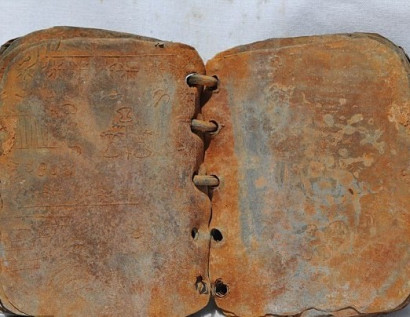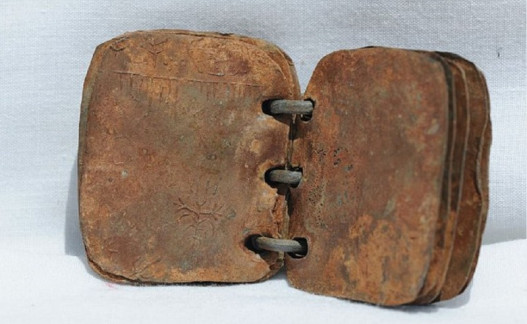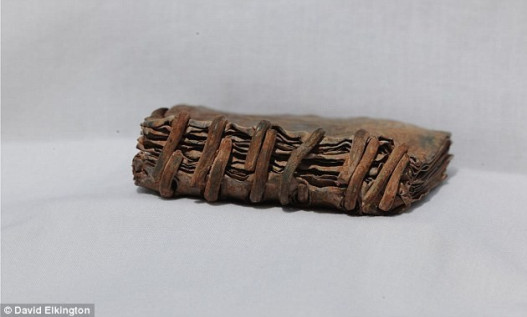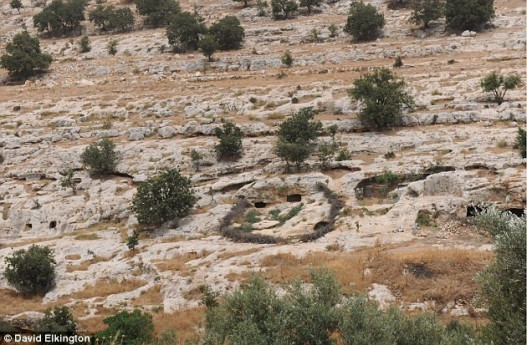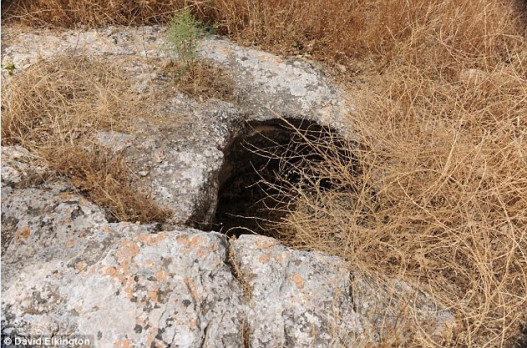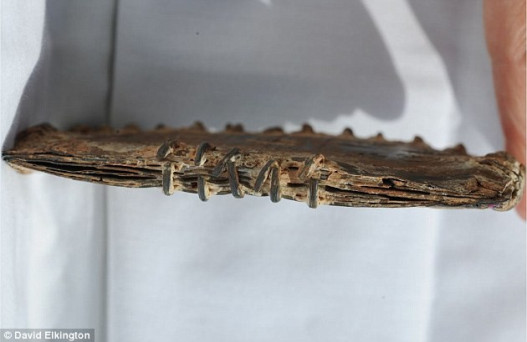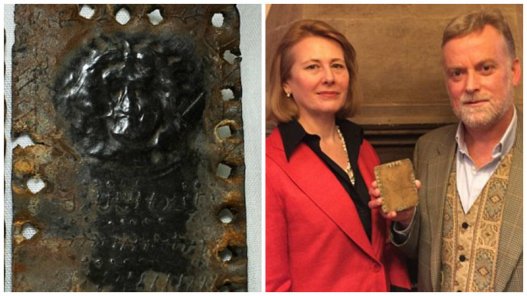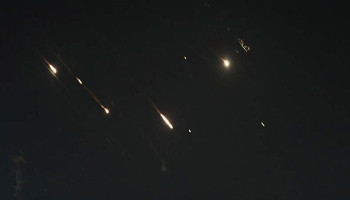An ancient set of lead tablets showing the earliest portrait of Jesus Christ have proved to be around 2,000 years old, according to experts.
The metal 'pages', held together like a ring binder, were found in Jordan in around 2008 by an Jordanian Bedouin and make reference to Christ and his disciples.
The lead has been analysed and the words and symbols translated and experts say the tablets date from within a few years of Jesus' ministry.
And what they reveal could be enlightening not only for Christians, but also Jews and Muslims.
The tablets suggest that Christ was not starting his own religion, but restoring a thousand-year-old tradition from the time of King David.
And the God he worshipped was both male and female.
Central to the books is the idea that Christ promoted worship in Solomon's Temple where the very face of God was believed to be seen - and this is where the episode with the moneylenders in the Bible came from.
One of the books bears resemblance to how the Book of Revelations is described as it has seven seals.
The books are known as codices - types of bound manuscripts distinct from scrolls - and among them is an image of Jesus himself.
Authors David and Jennifer Elkington have been campaigning since 2009 for the codices to be recognised and protected but say evangelical Christians are trying to brand them fakes.
They were apparently discovered by Hassan Saeda, an Israeli Bedouin, who according to some reports was given them by his grandfather, and by others that he discovered them in a flood.
The artefacts were found in a remote part of Jordan to which Christian refugees are known to have fled after the fall of Jerusalem in 70AD.
David Elkington, 54, of Gloucestershire, says he is now trying to prevent the codices from being sold on the black market.
In 2011 Elkington announced their discovery on BBC News and the world's press followed it up.
But a number of scholars came forward to brand them fakes, most without ever seeing the codices.
Now tests conducted by Professor Roger Webb and Professor Chris Jeynes at the University of Surrey's Nodus Laboratory at the Ion Beam Centre, confirm that the tablet is compatible with a comparative sample of ancient Roman lead unearthed from an excavation site in Dorset.
The experts said that the codex they tested 'does not show the radioactivity arising from polonium that is typically seen in modern lead samples, indicating that the lead of the codex was smelted over one hundred years ago'.
They went onto explain how the testing suggests that the artefacts are indeed 2,000 years old.
'While there may be variations in decay and corrosion that depend upon the environmental conditions in which the objects were stored or hidden, there is a strong underlying theme of decay from within the metal,' said the researchers in a press statement.
'It is oxidising and breaking down at atomic level to revert to its natural state.
'This is not witnessed in lead objects that are several centuries old and is not possible to produce by artificial acceleration (e.g. through heating).
'This provides very strong evidence that the objects are of great age, consistent with the studies of the text and designs that suggest an age of around 2000 years'.
The codex was leant to the Elkingtons by the Department of Antiquities in Amman for testing.
Further crystallisation analysis indicates that the codex is likely to be between 1800-2000 years old.
Although Christ is referred to outside of the Gospels, for example by the Roman writer Tacitus, these would be the earliest and only Hebrew-Christian documents in existence - and linguistic and metallurgical analysis now suggests they are.
Analysis of the script by scholars has confirmed that the language of the codices is Paleo-Hebrew.
The codices are covered in eight-pointed stars, symbolic of the coming of the messiah, and they mention the name of Jesus.
They also contain the names of apostles James, Peter and John.
